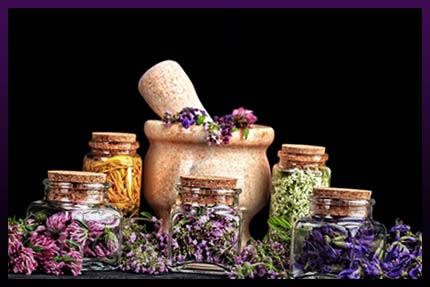09-02-2020
Learning how to cast an easy voodoo love spell
08-02-2020
Ancient magic spells – The best of the rituals
27-09-2019
Order lost love spells to be happy
26-09-2019
Casting a witchcraft spell for love at home
04-08-2019
Casting an easy spell for love at home
ST. JOHN’S WORT MAGIC
St. John’s wort is one of the most amazing herbs. It was praised by Galen, Dioscorides, Pliny, Paracelsus. Abu Ali Sina, a famous healer, who is also known as Avicenna, recommended drinking St. John’s wort decoction for 40 days to treat sciatica. It was widely used by ancient Egyptians and Ancient Greeks. In Russia, this herb was used by soothsayers. It was considered healing and magical. According to the old legends, St. John’s wort could protect from evil eye curses and hexes.
 To protect oneself from evil forces, one had to carry it with him everywhere. To prevent a sorcerer from entering the house, people attached some St. John’s wort to the door or hid on the threshold. It was also believed to be able to protect from witches and ghosts. This herb is most powerful before Kupala Night and was used by girls for fortune telling. But it turned out that French healers chose the early morning of Saint Jean Day, known as Ivan Kupala Day in Russia. They believed that gathered before sunrise, it had healing and magical properties. Amazingly, but many other peoples also believed in the magical powers of St. John’s Wort. Thus, the Englishmen called it “Saint Ivan’s herb” and also used it to protect themselves from evil forces by attaching it under their windowsills and doors.
To protect oneself from evil forces, one had to carry it with him everywhere. To prevent a sorcerer from entering the house, people attached some St. John’s wort to the door or hid on the threshold. It was also believed to be able to protect from witches and ghosts. This herb is most powerful before Kupala Night and was used by girls for fortune telling. But it turned out that French healers chose the early morning of Saint Jean Day, known as Ivan Kupala Day in Russia. They believed that gathered before sunrise, it had healing and magical properties. Amazingly, but many other peoples also believed in the magical powers of St. John’s Wort. Thus, the Englishmen called it “Saint Ivan’s herb” and also used it to protect themselves from evil forces by attaching it under their windowsills and doors.
The Italians called it “San Giovanni’s flower” while Anglo-Saxons called it “Saint John’s herb.” It was among the 12 plants of the followers of Rosicrucianism, a well-known secret magical society of the XVII-XVIII centuries. The Germans believed this herb to be able to protect from thunder and lightning. There was a tradition: during the solstice, boys and girls gathered it, made wreaths, put them on their heads and sang and danced in a ring around the fire. When the flames went out, they threw their wreaths on the roofs of their houses.
They were believed to be able to protect from lightning. According to the Russian legends, St. John’s wort was created from a bird’s blood or feather, which brought the heavenly fire (lightning) and was injured. Maybe, this legend appeared because if you grind its flowers between your fingers, your skin will get purple. In Silesia (Germany), people told fortunes with the help of St. John’s wort by grinding it between their fingers and saying, “Love – give blood, don’t love – give dirt.” So St. John’s wort was believed to be a divine herb and some even said that its sap is either the tears or the blood of the Virgin. The violet sap which is received by squeezing its flower buds was used for enchanting. St. John’s wort was believed to be able to cure 99 illnesses, prolong life and rejuvenate.
Here’s one interesting fact: caravans which carried sable furs, salmon and precious stones also carried a box with St. John’s wort. Merchants said it could heal the wounds received in battles. This herb was supplied to the tsar and there are a lot of historical documents proving it. Nowadays, knowledge about the magical powers of herbs is lost, but the healing properties of St. John’s wort are still widely used in folk and traditional medicine. So, treating ourselves with it, we also clean our homes from negative energy (people living in megalopolises suffer from most).
|
To solve your problem please e-mail me spellcaster.maxim@gmail.com
or give me your message using this feedback form
|
|
(votes: 40, rating: 4.57) |

